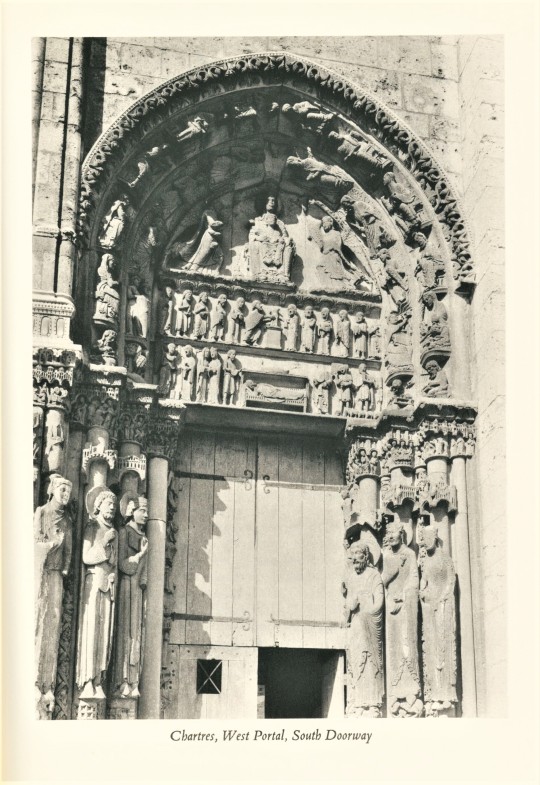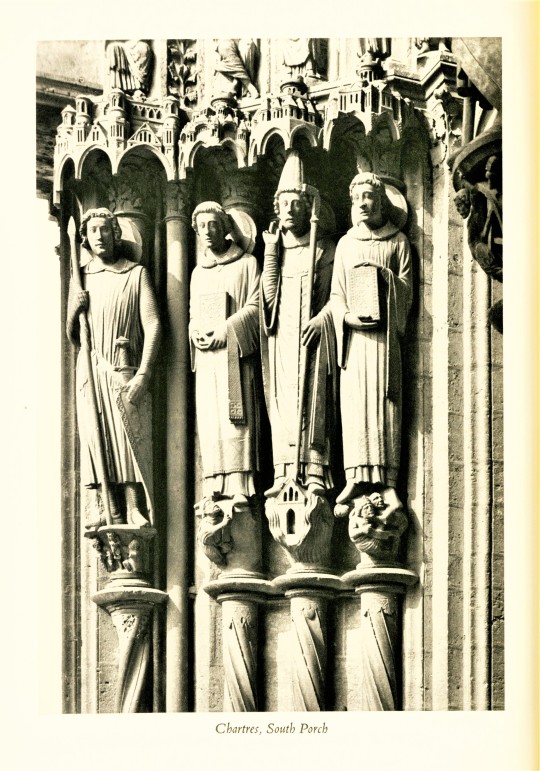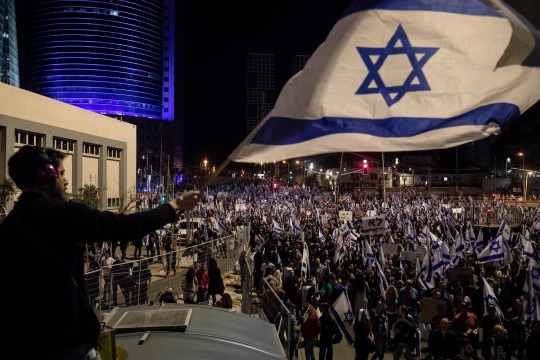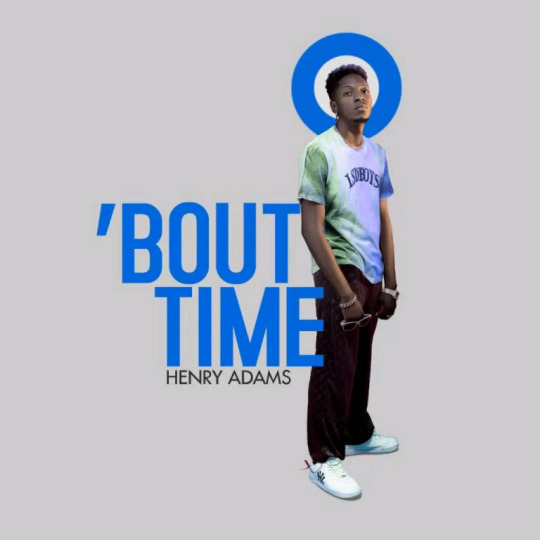#henry adams
Photo










Milestone Monday
On this date, October 24 in 1260, Chartres Cathedral, which had begun reconstruction after a fire in 1194, was consecrated in the presence of King Louis IX of France. Designated a World Heritage Site by UNESCO in 1979, this much-visited cathedral is well-preserved and restored, with the majority of the original stained glass windows still intact, and with only minor changes in the architecture since the early 13th century. Its west entrance is dominated by two spires, one built in 1160 that survived the fire, the other that includes an early 16th-century Flamboyant Gothic addition. Its three great façades are adorned with hundreds of sculpted figures illustrating key theological themes and narratives.
To commemorate its consecration 762 years ago, we are showing photographs of Chartres Cathedral by American artist Samuel Chamberlain (1895-1975), reproduced as photogravures for the 1957 Limited Editions Club production of Henry Adams’s tourist-journal style narrative Mont Saint-Michel and Chartres, printed at the Press of A. Colish in an edition of 1500 copies signed by the artist.
View other Milestone Monday posts.
#milestone monday#milestones#Chartres Cathedral#World Heritage Site#gothic cathedrals#gothic architecture#Samuel Chamberlain#photographs#photogravures#Henry Adams#Mont Saint-Michel and Chartres#Limited Editions Club#Press of A. Colish#fine press books
185 notes
·
View notes
Text
Henry Adams anyone?

Stinky old man about to cause everyone problems lol
#arkhamverse#lynx’s art stuff#harley quinn#Henry Adams#That whole arc was weird but somewhat fun lol
7 notes
·
View notes
Text

The Education of Henry Adams
2 notes
·
View notes
Text
" Daniel Webster, Henry Clay, and John Calhoun in some sense were all public property,"
in response to henry adams calling dw public property...
2 notes
·
View notes
Text
10 Must-read Autobiography Ever
A list of 10 #mustread #autobiography ever.
“The Autobiography of Malcolm X” by Malcolm X: Written by Alex Haley (1965)
This autobiography tells the story of Malcolm X’s life, from his childhood in Lansing, Michigan, to his time as a leader in the Nation of Islam, to his assassination in 1965. The book provides a unique perspective on the Civil Rights Movement and is considered one of the most important works of African-American…

View On WordPress
#alex haley#anne frank#autobiography#autobiography of martin luther king#Benjamin franklin#Benjamin franklin autobiography#diary of a young girl#elie wiesel#gandhi#henry adams#james mcbride#long walk#malcolm x#maya angelou#mlk juniro#must read#night#reading#reading book#slavomir rawicz#the color of water#top ten books
2 notes
·
View notes
Text
I read Henry Adams before I read Gore Vidal, but I liked Vidal better. Both were funny, but only Vidal was having fun.
Laughing my head off.
I thought there's no way Vidal could not love Adams' books and it proved right even though I've only read Vidal's Burr completely and only Adams' Education (almost) completely.
They're essentially the same style of writers except Vidal find more fun in discovering a fucked-up world and Adams just let his self-pities (tho actually I like his self-pity) grow more and more when he find the world become more and more fucked up.
And after reading a little bit of Adam's History and Democracy and John Randolph I'm fully convinced Adams' Gallatin is definitely the extreme outlier of his style. Though according to him, that book was perhaps the only one he wrote with love. Thus this guy is perhaps so fucked up that his reader's fun can only be established upon his pain lol
Plus I sincerely apologize for telling others Adams history is not funny in podcast lol
2 notes
·
View notes
Text
Henry Adams Quote: “All taxation is an evil, but heavy taxes, indiscriminately levied on everything are one of the greatest curses that can afflict a people.”
”All taxation is an evil, but heavy taxes, indiscriminately levied on everything are one of the greatest curses that can afflict a people.” - Quote by Henry Adams, 19th Century American Historian
0 notes
Text
Analysis: What Israel Can Teach the U.S. About Confronting a Constitutional Crisis
Sometimes you not only need to vote—you also need to vote with your feet.
— By Aaron David Miller and Daniel Miller | Foreign Policy | March 18, 2023

A protester waves an Israeli flag during a massive protest against the government's judicial overhaul plan on March 11 in Tel Aviv, Israel (Illegally Occupied Palestine). Amir Levy/Getty Images
Over the past four months, in an extraordinary display of national resolve and resistance, millions of Israelis have rallied in the streets to protest their government’s efforts to revolutionize the judiciary. Because Israel does not have a written constitution or bicameral parliament, these so-called reforms, if enacted, would eviscerate an independent judiciary, remove the one check and balance standing in the way of unbridled government power, and fundamentally undermine Israel’s democratic system.
In a recent conversation with the author, former Israeli Prime Minister Ehud Barak noted that the behavior of Israeli Prime Minister Benjamin Netanyahu’s government during the current crisis evoked thoughts of the U.S. Capitol insurrection on Jan. 6, 2021.
Can the United States learn anything from Israel in its own efforts to stop democratic backsliding and combat a future constitutional crisis in the event, for example, that a president seeks to hold on to power, overturn the results of a free and fair election, and threaten the very essence of constitutional government?
At first glance, the sheer size of the United States and fundamental differences between the two countries’ political cultures and governance systems might appear to render comparisons moot, if not irrelevant. But a closer look reveals important takeaways from Israel’s situation that are worth considering. If Israelis succeed in checking this judicial juggernaut, and even if they don’t, there are lessons for Americans should U.S. liberal democracy be seriously threatened.
The biggest takeaway from what has been happening in Israel has to do with the size, tactics, and endurance of the protests themselves. For months, the world has watched Israelis engage in sustained, massive, nonviolent protests and civil disobedience in cities and towns across the country, drawing participants from nearly all sectors of society.
The scale, scope, and composition of these demonstrations are unprecedented in the country’s history. Hundreds of thousands regularly attend the protests, which are largely grassroots demonstrations, locally organized with former officials and intellectuals recruited to speak. On April 1, close to 450,000 Israelis took to the streets. That is close to 5 percent of the population, roughly equivalent to 17 million Americans. A recent poll showed that 20 percent of all Israelis have protested at one time or another against the judicial coup.
Given the vast disparity in size, replicating this kind of sustained protest movement is no easy matter. As a point of comparison, the Women’s March on Washington on Jan. 21, 2017, drew between 1 and 1.6 percent of the U.S. population. But that doesn’t mean this is impossible. Indeed, the Black Lives Matter protests that took place in the United States in the summer of 2020 were largely spontaneous and may have included as many as 26 million—and perhaps more—protesters in total.
Size is critical, but so is the character of demonstrations. The essential element is nonviolence. As Erica Chenoweth and Maria J. Stephan have demonstrated in studying civil resistance movements that occurred between 1900-2006, using nonviolent tactics—which can include protests, boycotts, and civil disobedience—enhances a movement’s domestic and international legitimacy, increases its bargaining power, and lessens the government’s efforts to delegitimize it. Although the vast majority of Black Lives Matter protests were peaceful (despite the false or misleading media and government claims to the contrary), there were acts of violence, looting, and rioting. Any future protest movement in the United States must shun this kind of destructive behavior.
The Israeli movement’s endurance and persistence has also been an asset. The struggle for democracy is not a 100-yard dash—as demonstrated in other countries, such as Serbia. In Israel’s case, the perception that the so-called judicial reform wasn’t just some technical adjustment to the political system, but rather a fundamental threat to Israelis’ way of life, sustained the protests. The profound anger and mistrust toward the Netanyahu government further catalyzed Israelis from virtually all sectors of society to turn out in the streets.
A second essential part of the response to the judicial legislation in Israel has been the active participation of military reservists who have signed petitions, participated in protests, and boycotted their formal and volunteer reserve duty. These reservists play a critical role in both intelligence and air force operations that are key to the current security challenges Israel faces.
The Israel Defense Forces (IDF) is the most respected institution in the country. In fact, what led Netanyahu to pause the judicial legislation was the surge of protests that followed his (since rescinded) decision to fire Defense Minister Yoav Gallant. Gallant had publicly called for a halt to the judicial overhaul, arguing that it was jeopardizing Israel’s security. Adding to the pressure, a host of former IDF chiefs of staff, commanders, and former directors of Mossad have publicly opposed the judicial legislation. And even active, lower-level Mossad employees have been given permission to participate in the protests.
Such actions by former and current government officials are precisely what is needed to imbue the protests with additional legitimacy and to amplify the seriousness of the moment. Active members of IDF units have not refused to serve, and we’re not recommending that active U.S. military units join the protests. Indeed, given the U.S. tradition of the subordination of military to civilian authority, uniformed military would be hard-pressed to intervene in a political crisis.
Still, before the November 2020 election, when then-U.S. President Donald Trump refused to commit to a peaceful transfer of power pending the results, Joint Chiefs of Staff Chairman Mark Milley issued a public statement that the military had no role in an election and would “obey the lawful orders of our civilian leadership.” And senior military officials might well publicly remind the U.S. military—as the Joint Chiefs of Staff did in the wake of the Capitol insurrection on Jan. 6, 2021—that their mission is to defend the U.S. Constitution.
At the same time, civil servants from throughout the federal government should consider joining the protests and have their organizational representatives (the American Foreign Service Association at the Department of State, for example), issue statements in support. These employees need not resign, at least at first, but they should make clear their nonpartisan opposition to efforts to undermine the rule of law and constitutional norms. The nonpartisan nature of these actions would be reinforced if they involved not just federal employees in Washington, but also the much larger workforce throughout the country. Furthermore, calls to protest could also involve state employees, particularly if the constitutional crisis stemmed from state action.
Third is the importance of strikes. The Histadrut—Israel’s largest trade union, with an estimated 800,000 members—called for a general strike that followed more limited strikes in the preceding months. That decision shut down departures from Ben Gurion Airport. Israel’s research universities and medical facilities (all public hospitals and community clinics) also called to strike, in addition to the closing of banks, businesses, and restaurants (including the ever-popular McDonald’s).
These tactics worked in Israel because, along with other measures (such as closing highways through acts of civil disobedience), they communicated to government ministers and Knesset members that unless they reassessed the situation, the country would shut down, with grave economic and political consequences. The tech sector had already begun to express major concerns that judicial reform as envisioned by the Netanyahu government could turn Israel’s image as a start-up nation into one of a shut-down nation, raising risks that foreign investment might be curtailed and Israeli entrepreneurs might decide to move out of the country.
To be sure, the same tactics could not be so easily deployed in the United States. First, 25 percent of Israeli workers are in a union, compared to 10 percent in the United States. Second, shutting down a country the size of the United States would simply be impossible (although such a strategy might have more success in a small enough state). Additionally, it is unclear if such strikes would help or hurt the opposition politically, particularly in light of the fact that COVID-19 school closures and other lockdown measures were fraught. But strikes should be explored and studied as possible tools. In the summer of 2020, tens of thousands of U.S. workers participated in a “Strike for Black Lives.”
Furthermore, taking a page from the sports strikes in the wake of the 2020 police shooting of Jacob Blake in Kenosha, Wisconsin, there are more creative measures to explore in place of or in conjunction with traditional worker strikes. Sports leagues at both the college and professional level might suspend games until the crisis was resolved. If individual leagues were unwilling to participate, their stars could—and many likely would. What better way to cause a sustained, nationwide conversation about a specific topic that punctures all information bubbles than by forcing the cancellation of college football games, or the NBA playoffs, the World Series, or even the Super Bowl? In recent years, sports figures have increasingly become involved in politics, including ones from places you might not expect.
Similar strategies could be considered in the realm of Hollywood, the music industry, and other areas where Americans have a shared cultural appreciation and imbue their idols with the recognition and respect once enjoyed by political leaders. To avoid the appearance that these measures were partisan or political, these actions would need buy-in from actors, singers, entertainers, and writers from across the political spectrum, including from those who have always stayed above the political fray or who belong to the opposing political parties.
Fourth is the importance of respected political leaders, both current and former, joining the response to a severe political crisis. In Israel, former prime ministers have participated in the protest movement, including Barak and Ehud Olmert, as well as foreign and justice ministers such as Tzipi Livni. Former U.S. presidents have generally avoided this kind of participation, but in a severe crisis one can imagine former Presidents Barack Obama and George W. Bush, as well as other former senior officials from across the political spectrum, speaking out and participating in demonstrations.
Leadership extends beyond mere symbolism. Israeli opposition leader and former Prime Minister Yair Lapid made calls for a general strike, among other involvement by elected officials. Similar kinds of bipartisan leadership from those in the U.S. House and Senate would be important to amplify the message of the protests and provide legitimacy. And of course, if the constitutional crisis originated from Congress itself, elected representatives could use their authority to shut it down. In this case, the protesters and other stakeholders, such as businesses, should view their opposition as a way to lobby Congress, including by promising to withhold financial backing to any member who participates in the unconstitutional scheme. There were similar actions in the wake of Jan. 6.
It would also be imperative for leaders to come from outside government, including from media organizations that represent a broad spectrum of U.S. politics. Given the United States’ problem with misinformation, this would be essential to accurately portray what was happening on the ground, including dispelling any untruths—for example, the notions that the protests had turned violent or that they were simply partisan reflections of one political party or another.
Finally, perhaps the most important lesson of all is to look for ways to motivate the public with an inclusive national response that transcends party and partisan affiliation. The reason the Israeli protests have been so effective is that even in a society rent by so many divisions, Israelis have gone into the streets because they believe deeply that their very way of life—the character of their society, and the image they have of Israel as an open, tolerant, and democratic polity with all its weaknesses, including and especially the Israeli occupation—is fundamentally threatened. As journalist Gal Beckerman has written, Israeli protesters have wrapped themselves in their flag—the most visible symbol of the protests. And this is something, according to Beckerman, that Americans should take to heart.
It is important to emphasize, though, that most Palestinians—including both those who are Israeli citizens (roughly 2 million out of a total population of 9.7 million) and those under Israel’s occupation and control—see the protests as an effort to protect Israeli Jewish democracy, not a movement to extend equal rights or statehood to them. Arab political parties in Israel have backed the protests, but the majority of Palestinian citizens of Israel, even while they have a great deal to lose should the judicial legislation pass, feel the demonstrations don’t address their needs, including equal rights and rising crime.
But without holding the line against a government whose objectives include de facto if not de jure annexation of the West Bank, continued second-class citizenship for Palestinian citizens of Israel, and enabling violence against Palestinians—as seen in the settler rampages through the West Bank town of Huwara—there will be no chance for peace, an end of the occupation, or statehood for the Palestinians.
And while we remain gloomy about any chance in the near term for an equitable solution to the Israeli-Palestinian conflict, this protest movement has imbued Israel with a new energy and dynamism. It has created a focus on democracy, rights, and equality that hasn’t been seen in years and that could, under the right leadership, drive home the message that the preservation of Israel as a Jewish democratic state depends on ending the Israeli occupation and extending equal rights not just in principle but in practice to Palestinian citizens of Israel. One can at least hope so.
For the United States, the greatest challenge would be finding a way to wrap a movement in the U.S. flag and identify a broader set of unifying purposes that creates the biggest tent under which millions of Americans could rally. In today’s perniciously partisan environment, this would be hard—some might say impossible. To quote the historian Henry Adams, politics in the United States has become a “systematic organization of hatreds.” Without a written constitution, Israelis have turned to their Declaration of Independence as a source of inspiration, even as a set of principles for a future constitution. Perhaps the United States could do the same, turning to the basic founding principles that have shaped the country’s self-government.
The United States is perhaps the only nation in history founded on an idea: self-government in the interest of securing life, liberty, and the pursuit of happiness. Fundamentally, no matter the differences between Americans, what makes the United States special is its ability to self- correct, reinvent itself, and make progress toward guaranteeing opportunity, equality, and dignity for all. A truly national protest movement must be grounded in this dream and the aspiration of making it more accessible to everyone. We are hopeful and inspired by the younger generations in the United States today—by their commitment to making the country a better place for all Americans, and by how they would rise to meet the challenge if the United States were truly tested.
Of course, the best way to avoid illiberal backsliding, let alone a constitutional crisis, is to vote for candidates who respect the rule of law, abide by the Constitution, and adhere to democratic norms and standards. Once authoritarians entrench themselves in power, they can use their authority to remain there. But sometimes you not only need to vote—you also need to vote with your feet.
Some of this may seem naive and Panglossian. But the fight for U.S. democracy has always mixed the pragmatic and the aspirational. What has happened in Israel these many months has shown the power that people possess to safeguard their democracy when threatened. It’s not an easy conversation to have. But it’s worth having now because the stakes are so very high, and sadly, the dangers to the United States’ own democratic system are all too real.
— Aaron David Miller is a Senior Fellow at the Carnegie Endowment for International Peace and a former U.S. State Department Middle East analyst and negotiator in Republican and Democratic administrations. He is the author of The End of Greatness: Why America Can’t Have (and Doesn’t Want) Another Great President.
— Daniel Miller is a Lawyer and Activist. Since 2016, he has engaged in various forms of Pro-democracy work and has written for the Washington Post, CNN, Daily Beast, and New York Daily News on democracy issues.
#Analysis#Illegal Regime of Isra-hell#Occupied Palestine 🇵🇸#Constitutional Crisis#Aaron David Miller and Daniel Miller#Judicial Overhaul#War Criminal and Terrorist Prime Minister Benjamin Netanyahu#Former Israeli Prime Minister Ehud Barak#United States 🇺🇸#Erica Chenoweth and Maria J. Stephan#Israel Defense Forces (IDF)#Mossad#United States Joint Chiefs of Staff Chairman Mark Milley#Ehud Olmert#Strike For Black Lives#Former Prime Minister Yair Lapid#Palestinians 🇵🇸#Henry Adams#Politics in the United States has Become a “Systematic Organization of Hatreds
1 note
·
View note
Text
"Politics, as a practice, whatever its professions, has always been the systematic organization of hatreds."
Henry Adams, historian and teacher (16th February 1838-1918)
1 note
·
View note
Text
Henry Adams: Systematic organization of hatreds
“Politics, as a practice, whatever its professions, has always been the systematic organization of hatreds.”
—Henry Adams.
View On WordPress
0 notes
Text
“describe the raven cycle in one sentence”
ok:

#that’s fucking it#idk man#they’re so in love#all of em#in my pinterest era#the gangsey#ronan lynch#adam parrish#blue sargent#richard campbell gansey iii#henry cheng#noah czerny#trc#the raven cycle#pynch#the raven boys#blue lily lily blue#adam and ronan#gangsey#bluesey#mine
1K notes
·
View notes
Text
everyone’s always like ‘ronans so catholic’ in reference to like his deep spirituality or shame in dreaming or whatever but nobody uses it to talk about how even after adam and ronan made out shirtless all night he made them sleep in separate bedrooms. like that is the most catholic he’s ever been
#the perfect wording for this is trapped in my inner psyche#but this works lmfao#trc#tdt#the raven boys#the raven cycle#the dream thieves#blue lily lily blue#the raven king#ronan lynch#adam parrish#richard campbell gansey the third#richard gansey#blue sargent#noah czerny#henry cheng#bluesey#pynch#joseph kavinsky
3K notes
·
View notes
Text
DIY queen Sargent ✨
#blue sargent#the raven cycle#the raven boys#the dream thieves#blue lily lily blue#the raven king#maggie stiefvater#richard gansey#ronan lynch#adam parrish#noah czerny#henry cheng#character illustration#illustration
3K notes
·
View notes
Text
Henry Adams – Hustle Ft. T Dollar
Henry Adams – Hustle Ft. T Dollar
Henry Adams – Hustle Ft. T Dollar Mp3 Download, Lyrics, Mp4 Download, Audio, Youtube Music, 320kbps.
Talented Act and songwriter Henry Adams bounces back on the Music scene With a Potential Hit single titled “Hustle”. Which features T Dollar
The Song is a wonderful sound which is a must for your playlist.
Download Henry Adams – Hustle Ft. T Dollar Mp3 Audio.

View On WordPress
0 notes
Text
Henry Adams ft. Jaywillz - Rest Assured MP3 DOWNLOAD
#HenryAdams ft. #Jaywillz - Rest Assured MP3 DOWNLOAD
The natural Nigerian musician popularly known as Henry Adams breaks into the music room with a brand new song dubbed ”Rest Assured”
Apparently, he joins musical abilities with the ”Till Dawn” Nigerian music serial hitmaker popularly known as Jaywillz. Taken from his recently dropped extended playlist named ”Bout Time”
Not to mention, this song is hot, technically 100% good vibes supplier. It will…

View On WordPress
0 notes
Photo

“they were young and loud and triumphant, and the kings of henrietta.”
blue sargent | adam parrish | ronan lynch | gansey III | noah czerny
#trc#the raven cycle#blue sargent#adam parrish#ronan lynch#gansey#noah czerny#character design#my art#my notebook cosplaying as gansey's journal#adam's coca cola shirt has been a paid actor since book 1#buddy reading/rereading this series with mermianar#she has spiraled into trc obsession#go check out mermianar's art#stop reading the tags now mermia#no henry cheng bc she must not be spoiled
5K notes
·
View notes